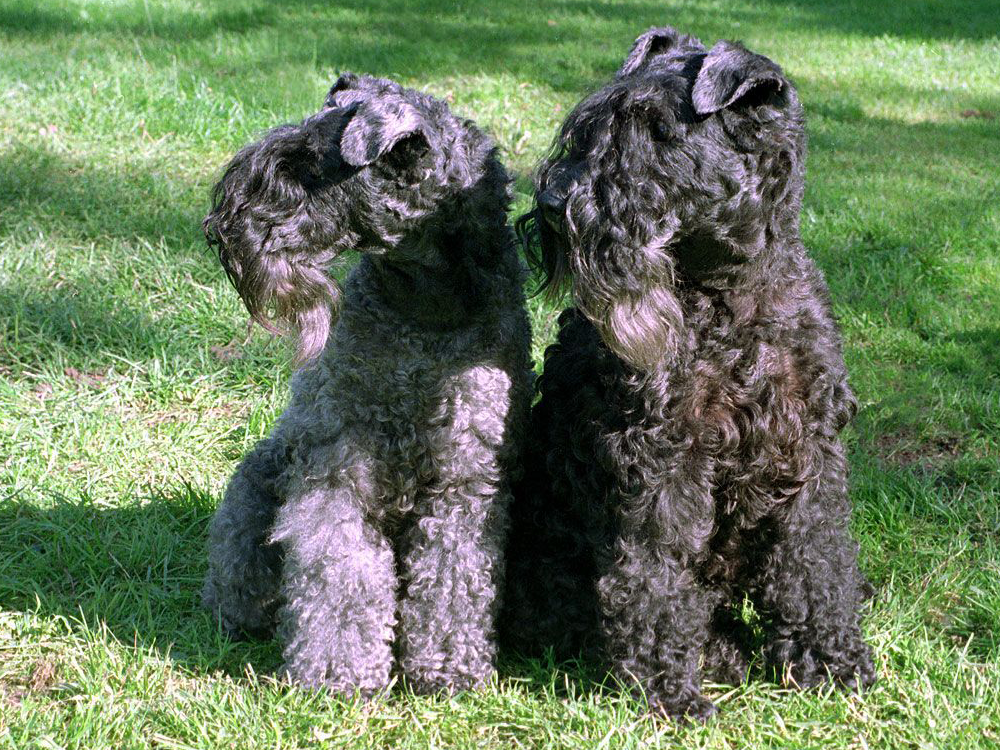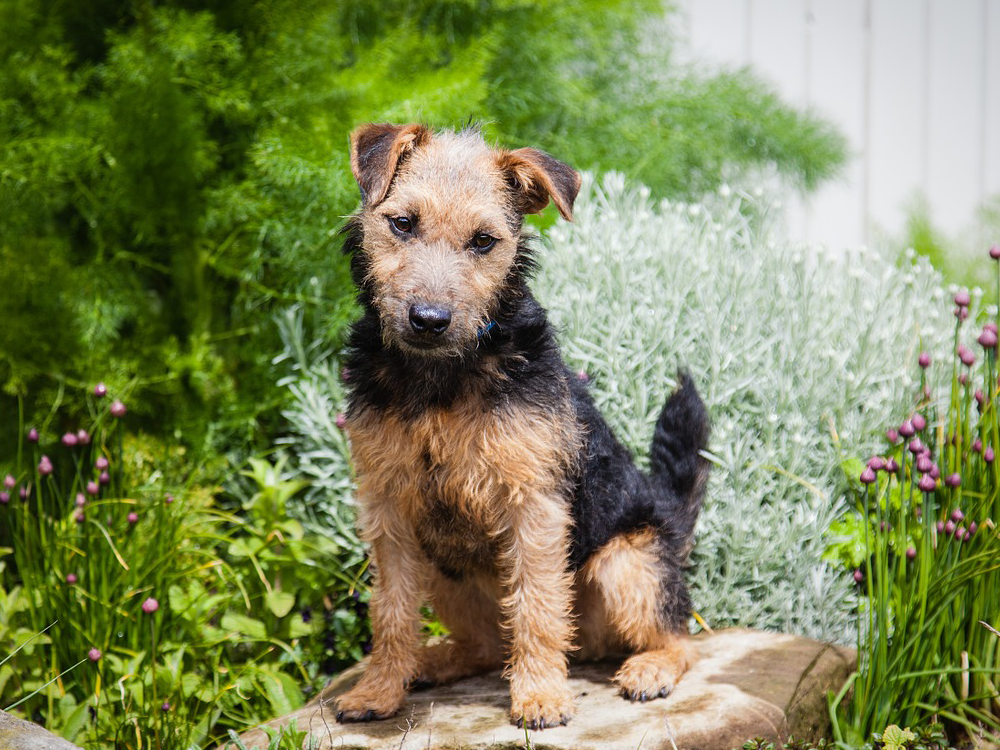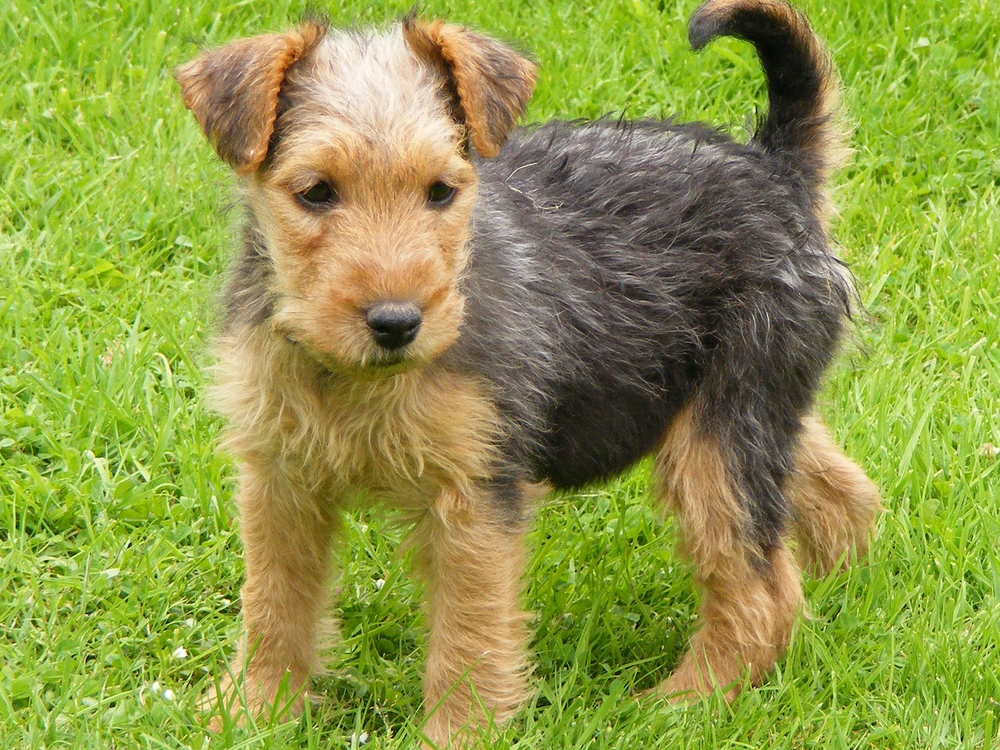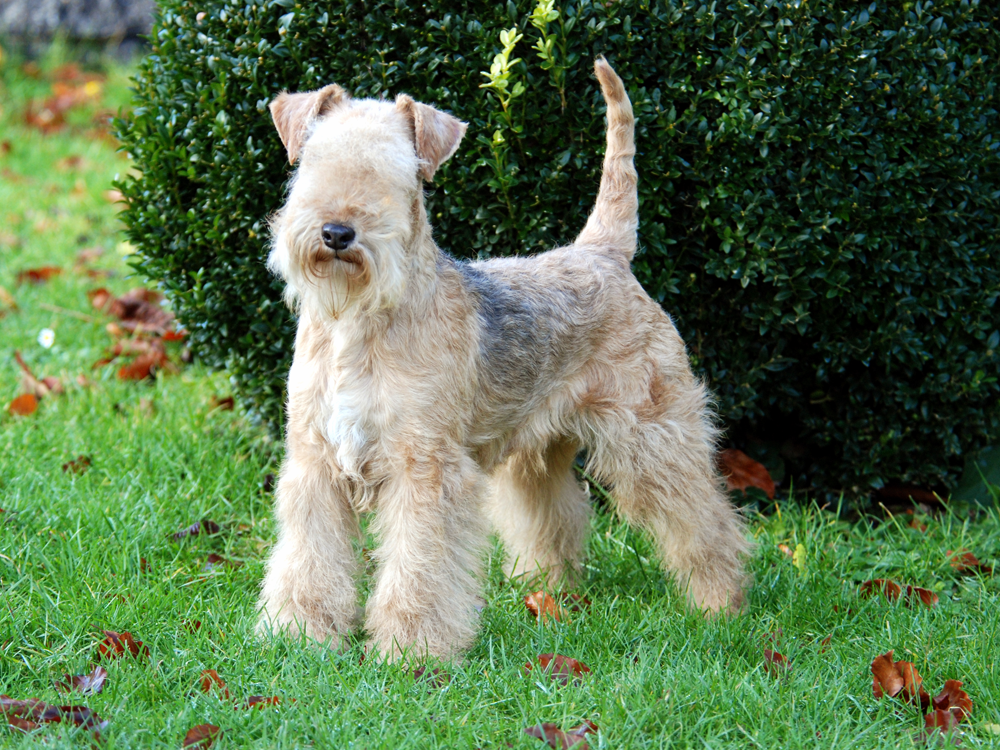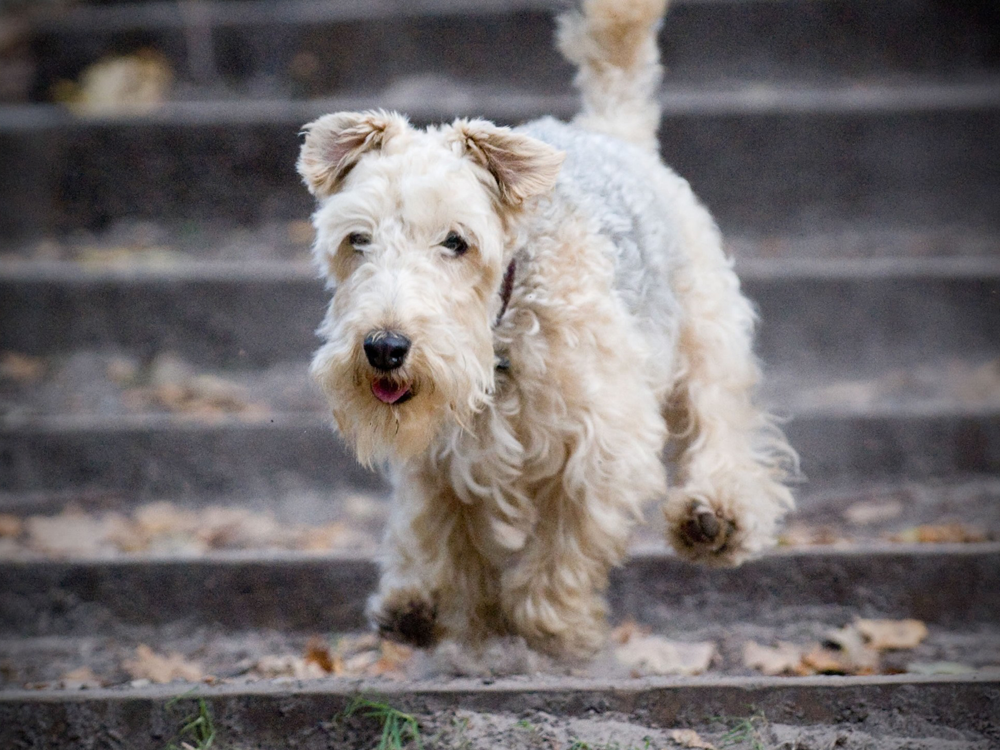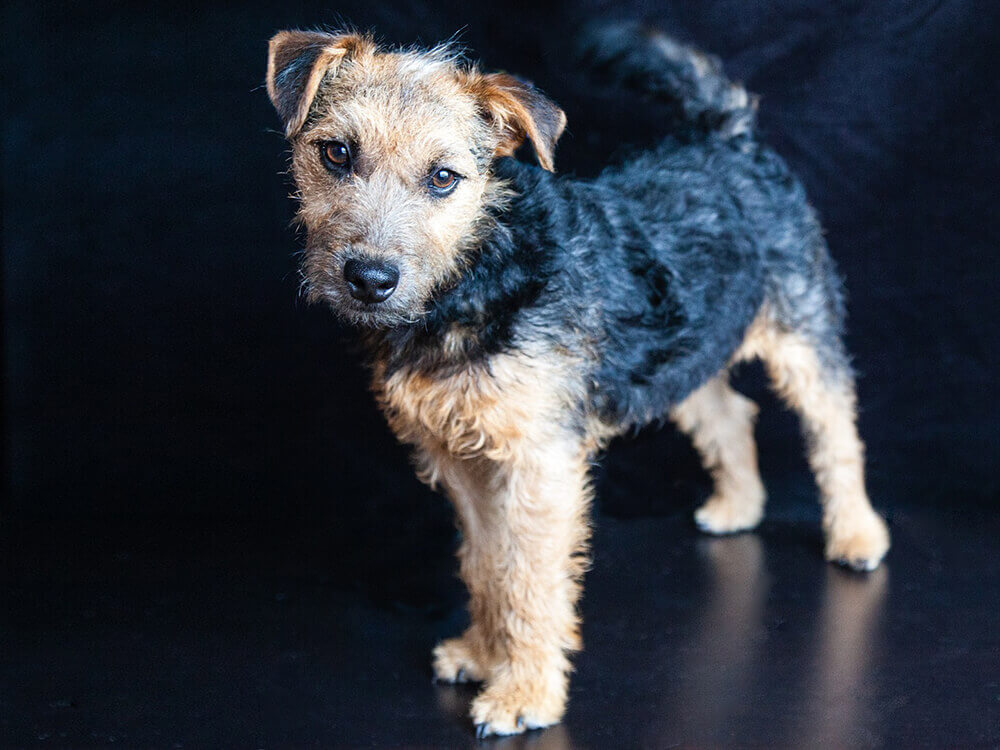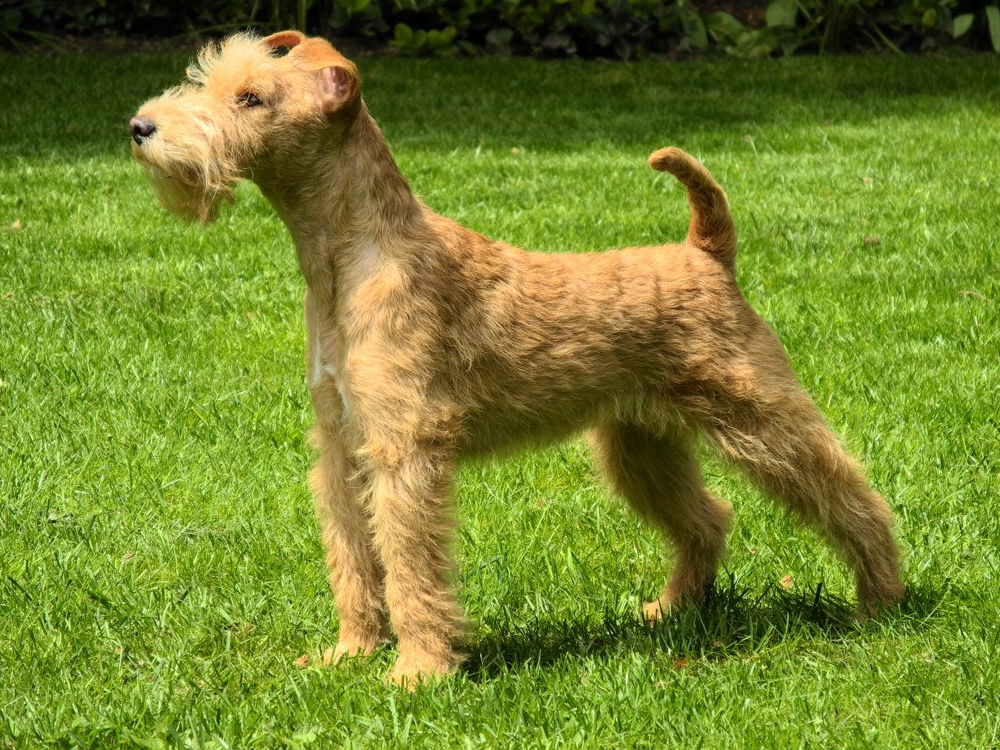
Lakeland Terrier Breed Pictures
Vital Breed Stats
| Height: | 37 - 37 cm M | 37 - 37 cm F |
| Weight: | 8 - 8 kg M | 7 - 7 kg F |
| Breed Group: | Working Dog Group |
| Life Expectancy: | 15 - 18 years |
| KC Registered: | No |
Breed Characteristics
| Size: |  |
| Grooming: |  |
| Exercise Level: |  |
| Trainability: |  |
| Barking Level: |  |
| Good with Children: |  |
| Good with other pets: |  |
| Affectionate: |  |
| Protective: |  |
| Cost to Keep: |  |
Give a thumbs up if you love the Lakeland Terrier

0
More About the Breed
History
As one of the first Terriers dating back from the 1700s, the Lakeland Terrier is often referred to as the "earth" dog descended from the old English Black and Tan and Fell Terriers. It was named after its place of origin the Lake District in England and was originally kept by farmers to hunt foxes. Lakeland Terriers are also successful in "going to ground" on the farm to hunt vermin and otter. Although there is a lack of documentation, many experts believe that the Lakeland Terrier shares a bloodline with the Bedlington Terrier, Fox Terrier and Border Terrier.
The Lakeland Terriers was first recognised by the UK Kennel Club between 1921 and 1928. There were debates as to the exact year. In 1932, the Lakeland Terrier Club was established, which promoted the breed nationally. Later in 1934, the American Kennel Club also registered and recognised the dog breed. Today, the Lakeland Terrier is known as an important dog show competitor and a wonderful, fun-loving pet.
Appearance
Appearance-wise, Lakeland Terriers resemble the Welsh Terrier, although slightly smaller and both breeds bear a resemblance to their somewhat larger cousin, the Airedale Terrier. Ideally, they must weigh 15 to 17 pounds and grow to a height of 33 to 38 centimetres at the shoulders (withers). Its head is rectangular-shaped, eyes are dark or hazel with intense and an impish expression, ears are V-shaped that fold over, and tail docked and carried up. It has long legs that allow it to run at incredible speeds and its slim body gives it easy access to small passageways to capture prey. Its tail is generally docked (US) or left long (Europe).
The Lakeland Terrier has a coat that is thick and dense, comprising of a profuse, wiry outer coat and soft undercoat. It comes in many colours including black, blue, liver, wheaten, and red. Some will have a tan or red grizzle saddle that covers their neck, back, sides and tails, which make them appear blue and tan, black and tan, liver and tan, red grizzle and grizzle and tan.
Grooming
Shedding in the Lakeland Terrier is minimal, and it is reduced even further when the coat is stripped correctly. Stripping is not necessary if the Lakelands will not be shown. Weekly brushing of the coat will help keep the coat clean and excess oil well-distributed. Also, Lakelands only need to be bathed as needed.
Check the ears once a week for signs of wax build-up, irritation or infection. Clean the ears with a cotton ball moist with a veterinarian-approved solution. Teeth should be brushed weekly (even daily) to prevent tartar build-up and promote gum health. Trim nails to avoid overgrowth, cracking and splitting that may become painful for the dog.
Temperament
Intelligence
With a stubborn streak and high intelligence, the Lakeland Terrier is a tough dog to housetrain. It has a short attention span and relatively swinging moods, so it is better suited to experienced owners that can handle a dog breed with this type of disposition. Early socialisation is crucial to make sure Lakelands don't turn out to be dominant and unruly.
The Lakeland Terrier is a fun-loving dog breed that generally enjoys the company of children. Like with any dogs, any interaction should be well-supervised especially when playtime becomes too boisterous. Lakelands do not get on well with other dogs of the same sex, especially the terrier-types. In addition, their prey drive is strong when around smaller animals and pets so care should be taken.
Nutrition
- Senior and less active: up to 500 calories daily
- Typical adults: up to 560 calories daily
- Physically active/working dogs: up to 620 calories daily
Feeding
Health
Exercise
Cost of Ownership
The Lakeland Terrier is a rare breed in the UK so buying a puppy can be challenging and requires a bit of patience. Other than being on a waiting list, you have to pay over £400 to £700. Here is a list of some basic costs when you buy a Lakeland Terrier puppy:
- Pet Insurance - £20 to £45 a month (depends on coverage)
- Basic equipment - £200 (initial cost/one-off)
- Food and treats - £20 to £30 a month
- Veterinary Fees – up to £800 per year
Lakeland Terrier Breed Highlights
- Lakeland Terriers resemble the Welsh terrier, although slightly smaller.
- They are bold, tenacious, curious, intelligent and playful.
- They are always alert and confident, which make them excellent watchdogs.
- Shedding is minimal, and it is reduced even further when the coat is properly stripped.
- They will need at least one hour exercise a day.







